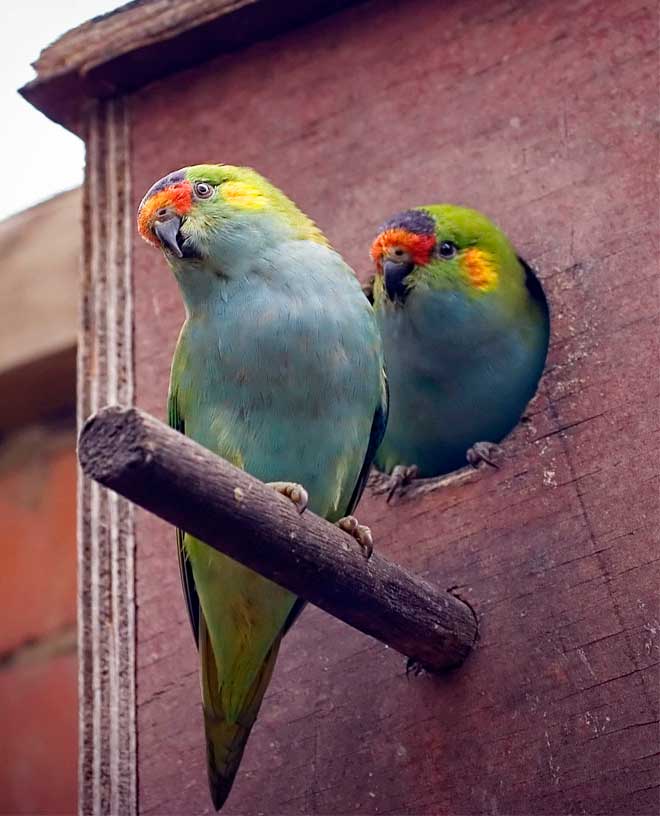
Glossopsitta porphyrocephala (*)
Superregnum: Eukaryota
Cladus: Unikonta
Cladus: Opisthokonta
Cladus: Holozoa
Regnum: Animalia
Subregnum: Eumetazoa
Cladus: Bilateria
Cladus: Nephrozoa
Superphylum: Deuterostomia
Phylum: Chordata
Subphylum: Vertebrata
Infraphylum: Gnathostomata
Megaclassis: Osteichthyes
Cladus: Sarcopterygii
Cladus: Rhipidistia
Cladus: Tetrapodomorpha
Cladus: Eotetrapodiformes
Cladus: Elpistostegalia
Superclassis: Tetrapoda
Cladus: Reptiliomorpha
Cladus: Amniota
Classis: Reptilia
Cladus: Eureptilia
Cladus: Romeriida
Subclassis: Diapsida
Cladus: Sauria
Infraclassis: Archosauromorpha
Cladus: Crurotarsi
Divisio: Archosauria
Cladus: Avemetatarsalia
Cladus: Ornithodira
Subtaxon: Dinosauromorpha
Cladus: Dinosauriformes
Cladus: Dracohors
Cladus: Dinosauria
Ordo: Saurischia
Cladus: Eusaurischia
Subordo: Theropoda
Cladus: Neotheropoda
Cladus: Averostra
Cladus: Tetanurae
Cladus: Avetheropoda
Cladus: Coelurosauria
Cladus: Tyrannoraptora
Cladus: Maniraptoromorpha
Cladus: Maniraptoriformes
Cladus: Maniraptora
Cladus: Pennaraptora
Cladus: Paraves
Cladus: Eumaniraptora
Cladus: Avialae
Infraclassis: Aves
Cladus: Euavialae
Cladus: Avebrevicauda
Cladus: Pygostylia
Cladus: Ornithothoraces
Cladus: Ornithuromorpha
Cladus: Carinatae
Parvclassis: Neornithes
Cohors: Neognathae
Cladus: Neoaves
Cladus: Telluraves
Cladus: Australaves
Ordo: Psittaciformes
Familia: Psittaculidae
Subfamilia: Loriinae
Genus: Glossopsitta
Species: Glossopsitta porphyrocephala
Name
Glossopsitta porphyrocephala (Dietrichsen, 1837)
References
Trans.Linn.Soc.London(1) 17 p.553
The purple-crowned lorikeet (Parvipsitta porphyrocephala), (also known as the porphyry-crowned lorikeet, zit parrot, blue-crowned lorikeet, purple-capped lorikeet, lory, cowara, lorikeet, and purple-capped parakeet) is a lorikeet found in scrub and mallee of southern Australia. It is a small lorikeet distinguished by a purple crown, an orange forehead and ear-coverts, and a light blue chin and chest.
Taxonomy
The purple-crowned lorikeet was described by Lionel Dietrichsen in 1837 as Trichoglossus porphyrocephalus. His first description in 1832 used the name Psittacus purpureus, a name preoccupied by a description of another species.[2] The specific epithet derived from the Ancient Greek words porphuros "purple" and kephalē "head".[3] Alternate common names include porphyry-crowned lorikeet,[4] Dietrichsen's lory,[5] and Zit parrot, from its shrill call.[5]
Description
Measuring around 15 cm (6 in) long, the male purple-crowned lorikeet is a small lorikeet with a dark purple crown, a yellow-orange forehead and ear-coverts, deepening to orange lores, and green upperparts, tinted bronze on the mantle and nape. The chin, chest and belly are a conspicuous powder blue, while the thighs and under-tail coverts are yellowish-green. The green tail has some orange-red coloration at the bases of the lateral feathers. The large crimson patches under the wings are visible when the bird is in flight. The small beak is black, the iris brown and the feet grey. The female is similar but has a darker iris, paler ear coverts and lacks the crimson patches. Immature birds are duller and lack the purple crown.[6] Its call is a high-pitched loud tsit, as well as chattering while eating in treetops.[6] Its call is lower pitched than the little lorikeet but higher than the musk lorikeet.[7]
Distribution and habitat
The purple-crowned lorikeet is found in southwest Western Australia, and in southern South Australia, east from the southern Eyre Peninsula, through the Gawler Ranges and southern Flinders Ranges and across Victoria to East Gippsland. It is also found on Kangaroo Island, but is not found in Tasmania.[4] It is the only native lorikeet found in Western Australia.[8]
Locally nomadic, it is often found in dry sclerophyll forest and town parks and gardens, especially where Eucalyptus trees are flowering.[6][4][8]
Behaviour
Generally found in small groups, the species may congregate in larger flocks, and may be in the company of Little- and musk lorikeets.[6][4] It is a fast, straight flyer and dwells mainly in the forest canopy far above the ground.[5]
Feeding
The lorikeet is a gregarious blossom nomad that often reappears in areas where it has not been seen for some time.[8] Blossoms of various Eucalyptus and Melaleuca species, and the boobialla (Myoporum insulare) are among material consumed.[6]
Breeding
Breeding season is from August to December with one brood laid. The nest is a small unlined hollow in eucalypt, often with a knot-hole entrance.[7] Sometimes the species nests in colonies. A clutch of 2-4 matte white roundish eggs, measuring 20 x 17 mm, is laid.[9] The incubation period is around 17 days.[6]
Aviculture
Captive purple-crowned lorikeets have had a reputation for being short-lived.[4] It is almost never seen in captivity outside Australia.[5]
References
BirdLife International (2012). "Glossopsitta porphyrocephala". IUCN Red List of Threatened Species. 2012. Retrieved 26 November 2013.
Beolens, Bo; Watkins, Michael; Grayson, Michael (2014). The Eponym Dictionary of Birds. Bloomsbury Publishing. p. 343. ISBN 9781472905741.
Liddell, Henry George & Robert Scott (1980). A Greek-English Lexicon (Abridged ed.). United Kingdom: Oxford University Press. ISBN 0-19-910207-4.
Lendon, Alan H; Cayley, Neville William (1973). Australian parrots in field and aviary. Sydney: Angus and Robertson. pp. 26–28. ISBN 9780207124242.
Low, Rosemary (1978). Lories and lorikeets. London: Elek. pp. 116–118. ISBN 9780236401024.
Forshaw, Joseph M. & Cooper, William T. (1978). Parrots of the World (2nd ed.). Melbourne: Landsdowne Editions. p. 90. ISBN 0-7018-0690-7.
Slater, Peter; Slater, Pat; Slater, Raoul (2009). The Slater Field Guide to Australian Birds (2nd ed.). London, Sydney, Auckland: Reed New Holland. pp. 210–211. ISBN 9781877069635.
Menkhorst, Peter; Rogers, Danny; Clarke, Rohan; Davies, Jeff; Marsack, Peter; Franklin, Kim (2017). The Australian Bird Guide. Clayton, Vic: CSIRO Publishing. pp. 266–267. ISBN 978-0643097544.
Beruldsen, G (2003). Australian Birds: Their Nests and Eggs. Kenmore Hills, Qld: self. p. 246. ISBN 0-646-42798-9.
Retrieved from "http://en.wikipedia.org/"
All text is available under the terms of the GNU Free Documentation License

